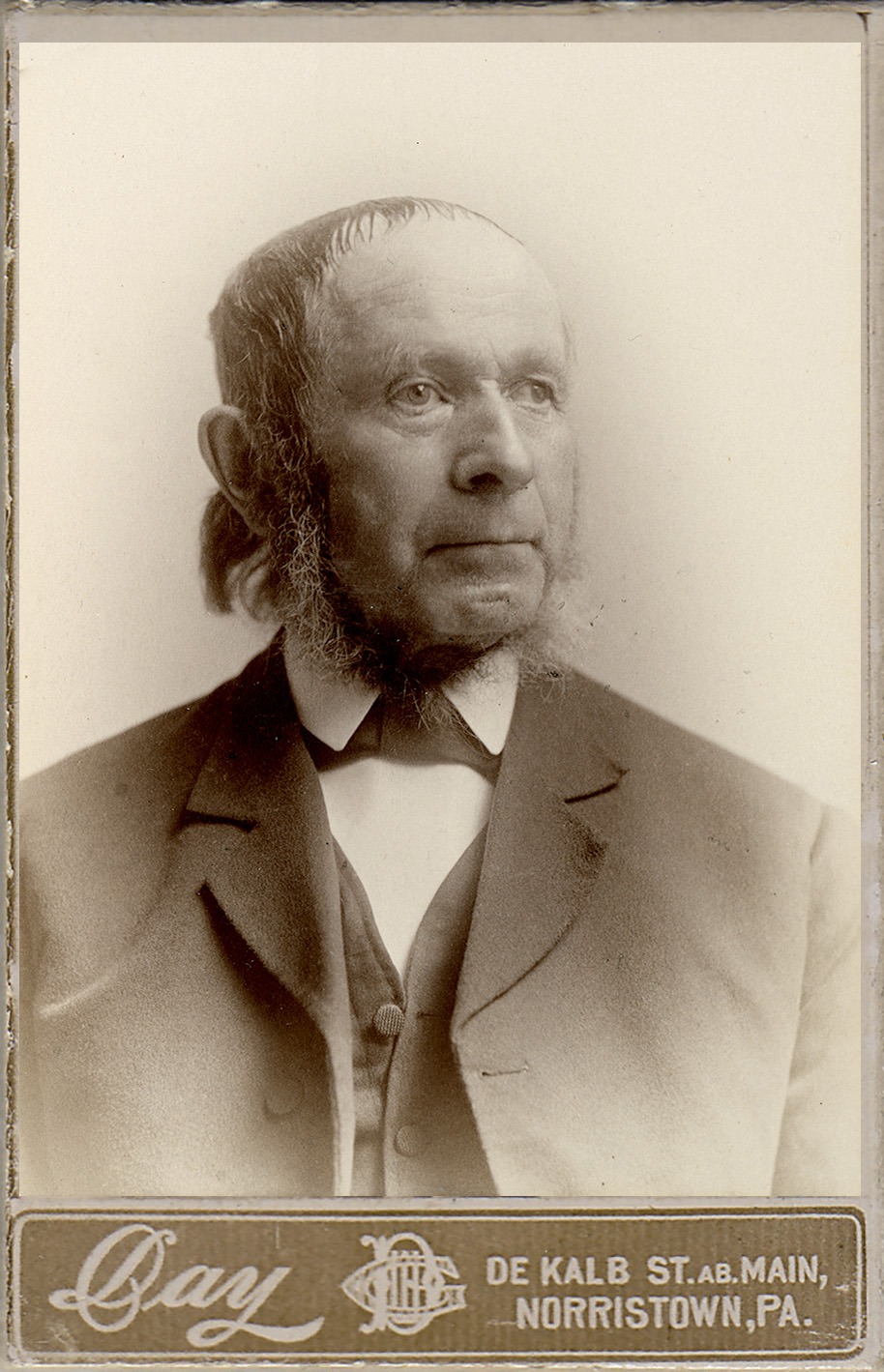
Carte de visite
George W. Day, Photographer, Norristown, PA, ca. 1890
Private collection
Brother John T. Cummings
John Taylor Cummings, Shaker mill operator, deacon, and trustee, born April 18, 1829, in Groton, New Hampshire, was the son of Edward Taylor and Mary (McGrath) Cummings.
John was the eldest son of Edward and Mary Cummings. By the time the family joined the Shakers he was a mature, curious, and capable sixteen-year-old. He lived at the North Family for several years and became the apprentice of Brother Joseph Severance, a gifted carpenter, wheelwright, carriage maker, and millwright. Under Joseph’s tutelage John learned all he could about machinery, fine woodworking, and building construction. When he moved to the Church Family in 1852 he was fully capable of taking charge of their mills and mechanical operations.
John lived and worked in the Stone Mill building. Like all Shaker brothers, however, he also had seasonal agricultural responsibilities. His particular love was maple sugaring. For many years, Joseph Dyer, Sr., had had charge of the “sugar bush.” But on his death it became John’s special province. Many years later, Henry Cumings wrote a beautiful tribute to his brother’s passion for sugaring. The article, published in The Enfield Advocate on April 16, 1909, and entitled “Visit to a Sugar Camp,” stated that John Cumming had run the camp “every year, the present year being the forty-sixth, without missing one.”
Henry Cumings gave John full credit for designing and building the 1854 cow barn at the Church Family. He also stated that John “had charge of all the building done at the Church.” Beginning in 1856 John also held the office of deacon. This responsibility brought with it the need for business-related travel. So his horizons were not limited to “life on the farm.”
In 1872 John’s youngest brother Enoch Cummings began writing letters urging him to leave the Shakers. Enoch had created a comfortable life for himself after turning his back on Shakerism. He believed his brother would also be able to make the transition if he would only muster the courage to “get clear of the Shakers.” He enumerated John’s many abilities, and insisted that the Shakers unjustly refused to compensate him for his work. He asserted that the community neither respected nor appreciated John’s contributions to their well-being. John was deeply troubled by Enoch’s low opinion of his situation. In drafts of letters to his sisters Ann and Rosetta Cummings he outlined his reasons for contemplating apostacy. Perhaps putting his grievances on paper provided the opportunity he needed to re-examine his life. John kept the letters but never delivered them. Instead he remained a faithful Shaker brother at Enfield.
In later life John Cummings met with two serious mill accidents; both involved the loss of parts of his hands. Nonetheless, he continued to work, constructing, among other things, the wooden parts for “Eclipse” corn planters. He served as a Trustee of the Society until shortly before his death.
John Taylor Cummings died August 2, 1911, at the Shaker community in Enfield, New Hampshire. His obituary was published in The Boston Globe on August 5, 1911 (p. 12). John is the only member of the Cummings family who is buried in the Enfield Shaker Church Family Cemetery.
Original author: Mary Ann Haagen

